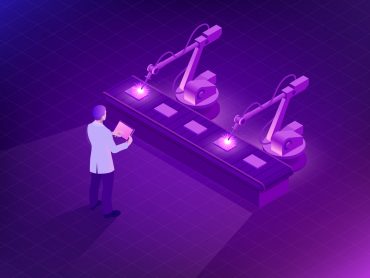
Digital transformation isn’t just about technology and processes. It’s also about people. Ultimately, it’s a company’s people that will make or break the transition.
Enterprises have increased their adoption of digital manufacturing during the COVID-19 pandemic – and this trend is not expected to slow down as people return to work. However, driving successful digital transformation within industrial organizations requires not only having the right technology but also achieving a step change in operational productivity. Even before the pandemic, people’s day-to-day roles were changing at all levels – and the accelerated pace of digitalization as a result of the COVID-19 pandemic will only make these transitions more extreme. When not properly planned for or communicated, these changes can often be resisted, meaning costly transformation initiatives could slow down or fail.
Address initial challenges
Manufacturers face two initial challenges in digital transformation. The first: digital transformation is a massive endeavor that spans several disciplines. In a manufacturing environment, the process must be driven equally by both IT leaders and OT leaders, working together toward a common goal. For the transition to be successful, these two groups must collaborate effectively. This can pose a major hurdle, as IT and OT divisions are often siloed.
The second challenge is developing the right roadmap for actually executing transformation efforts. Businesses may have mapped out how digital transformation is going to benefit the organization and gained executive buy-in, but do they understand what is required to actually bring the transformation to life in a manufacturing plant? To do this, they need to carefully plan how they will leverage software, cybersecurity, and hardware tools to transform their business.
For digital transformation to succeed, organizations need to first address these two issues. Once these gaps have been bridged, they can turn toward the most important concern: people.
Prioritizing people in digital transformation change management plans
Workers have often expressed anxiety about digital transformation, particularly in the manufacturing sector. But these fears are misplaced, as this transition won’t render humans obsolete. Quite the contrary, as people play a key role in digital transformation. They’re core to the change, development, and productivity of this transition, ensuring that digital transformation efforts are properly implemented and that organizations get the desired results from it.
People won’t be replaced as part of digital transformation, but it will change their roles – for the better. They’ll gain more insights and increased productivity. With people being so critical during and after digital transformation, and since their functions will change because of it, manufacturers must develop a comprehensive change management plan centered around their employees. For these employees to deliver optimal results in these new roles, they’ll need to be properly prepared, trained, and supported.
To create this plan, leaders first need to define for themselves what exactly will change in their organization and how those changes will impact employees. This requires an understanding of how manufacturers operated in the past and how they’ll operate after digital transformation. Businesses tend to view change management from the lens of how a transition will impact an entire group. But they should also consider how digital transformation will impact individual employees – understanding how it will change each employee’s job and what skills they will need to thrive.
Managing change on an individual level: The reason, role, path, and partner model
At a fundamental level, digital transformation occurs by moving individuals through change. The massive shift in an organization happens one person at a time. To guide these individuals through this transition, enterprises need a change management plan that provides each employee with four components: the reason for change, their unique role in the change, a path to successful change, and partners to support individuals during the change.
To understand the reason for change, employees need to grasp what is changing and why, as well as the risk of not changing. Here, it is critical that leaders contextualize risk at an organizational or enterprise level (what could happen to the business if it doesn’t digitally transform) as well as an individual level (what are the potential downsides for employees if the business doesn’t digitally transform).
Individuals also must understand what their role will be in the change: What actions or activities will each person be assigned or required during the change? Leaders must explain how an individual’s job description will evolve and what will be expected of them during each stage of the digital transformation process. Frequently, business leaders spend so much time selling their employees on the importance of digital transformation that they forget to make clear what these individuals need to do to help make the transition work.
Next, leaders need to offer individuals a clear path to a successful digital transformation. Employees must be equipped with the proper knowledge, skills, and abilities to help drive change. Moreover, leaders must ensure that there are no organization-wide obstacles that might impede anyone from performing their new role. The importance of this step cannot be overstated: neither individual employees nor entire organizations can expect to manage such a transition if people do not have the right training and tools or if they’re hindered by barriers.
Last is partnership. Leaders must establish purposeful partnerships for their employees, linking each individual with peers that can offer coaching, practice, and reinforcement. To do this effectively, leaders should look closely at each employee to determine who they’d benefit most from being partnered with, as well as who would benefit most from being partnered with them. People are naturally social. When an organization ensures that the transformation is social and collaborative, the new processes will be adopted faster.
Last thoughts on digital transformation
In manufacturing, digital transformation often first conjures visions of advanced new machinery and automation. But digital transformation isn’t just about technology and processes. It’s also about people. Ultimately, it’s a company’s people that will make or break the transition. To achieve their business goals, manufacturing organizations must prioritize their employees – supporting them as both a unit and individuals – from the outset of any digital transformation effort and reflect that in a comprehensive change management plan.



























